|
Last fall, we moved across the country and into a new house. This was a huge shakeup! One of the things I needed was a new laundry basket to fit a dark and awkward corner in our bathroom. The Starting Point - A "Sad Greige" Laundry BasketI ended up buying this laundry basket at Target. The size was just right, but the gray fabric just made me sad. Right now gray walls are everywhere, but we decided to paint the house in more cheerful colors - peach, turquoise, and a very pale pink. So gray just wouldn't do. Luckily, I'm a weaver! I set out to weave a fabric that would go with our new color scheme, and brighten up that dark corner in the bathroom.
You know those moments where you think, I have nothing to knit? There usually followed by thoughts of I have no yarn, which is just silly if you've seen the size of my stash. Anyways, that's what happened to me a couple of weeks ago, when I knew there was going to be lots of time spent standing around and waiting. I needed a knitting project that was going to be more engaging than my standard socks, but easy enough that I could carry on a conversation while working on it. Several years ago, I bought the pattern for Starshower, and that's what I cast on with my recently finished Monsoon Sunset spin. I liked that the pattern would preserve the gradient nicely. I liked the shape of the garment, as it drapes in a way that is very similar to how I wear most of my shawls, but without the fuss of having to tie, pin, or worry about the thing coming off. I'm not sure what led me to pair this yarn with that pattern, but I did, and I had a fun project to entertain me in the nick of time. As so often happens with handspun yarn, it wasn't exactly the yarn the pattern called for. My yardage was right, but the gauge I was getting was way too dense for a cowl with some drape. So I ripped back and went up a needle size. I also decided that I wasn't a huge fan of all those slipped stitches, and switched to a lace pattern. Because I do everything the hard way, I essentially re-wrote the pattern to accommodate the lace pattern I liked. (I didn't realize that the designer, Hilary Smith-Calais, has quite a few cowl patterns in similar shapes, some with lovely lace patterns!) The resulting cowl is comfy and cozy and fun, although now it's going to get packed away for the rest of the summer. It's a scorcher over here and our a/c just broke! If you're interested in how I re-wrote the pattern, my Ravelry project page is here, with detailed notes.
Want to spin your own? Monsoon sunset is available in my shop as a 6 oz braid! Yesterday, I cut the second of two warps off my SAORI loom. I had the idea for this fabric back in February - a highly textured warp woven loosely with a plain weft. I also wanted lots of shades of a similar color. I found a couple of different textured yarns that I liked - Woolfolk's Flette and Plymouth Yarn's Arequipa aventura. I had two skeins of each, and each skein was a slightly different shade of gray. I set them aside to marinate for a while, and discovered I had lots of unplied CVM singles from the first fleece I'd ever bought. I went ahead a plied them to make some of the softest yarn I've ever felt. Then I did another stash dive and found some laceweight gray alpaca yarns - some dark gray and some a pale silver. I started warping and designing in the reed for a fabric the width of my Saori WX60 loom (60 centimeters, or about 23.5 inches). It was still missing something, so I hopped on over to Spun and picked up two skeins of HiKoo's SimpliNatural in a dark gray and light silver color. Winding the warp for this fabric was no picnic. It wanted to tangle at every opportunity, and because many of the warp yarns were so thick, it wouldn't all fit on the warp beam - I had to cut off the last two yards and turn them into a separate warp. There were also lots of different kinds of yarn in this fabric - some very stretchy wool, some a little stretchy, and some not-stretchy-at-all alpaca. This was challenging both in the warping and the weaving - keeping an even tension on all these yarns was difficult, and led to a higher-than-average amount of loom waste. Once I got the hang of it though, these pieces were quick and easy to weave. The weft is a wool/cashmere blend. Above on the left, you can see the fabric as it comes right off the loom, and on the right, after wet finishing. The fabric is insanely soft and has the most fabulous drape. What will it become? I'd originally envisioned it as a throw blanket in three panels, but having to cut the warp in half may have thrown a wrench in that plan. So far, only the smaller piece has been wet-finished. Once I wet-finish the larger piece, I'll know more about how much fabric there is to work with.
This year, the spinning group in my guild decided to do a fiber exchange/challenge. The rules were simple: each person would bring in four ounces of clean, unspun fiber, we'd swap it, and make something with it by the end of the year. I got a mystery wool, along with some light tan alpaca. I tossed it all in the dyepot along with some mohair that had been lingering in the stash. Once the wool was dyed, I blended everything on my drum carder, and spun it into fine singles. Then I 3-plied it, resulting in this yarn: The mohair and wool give it a lot of shine, and the alpaca gives it a little bit of softness. Initially, I'd loved the color, but by the time I'd finished, I felt like I'd gotten my fill of that shade of pink.
So, back to the dye pot I went. I used a tye-dye method that I read about in the first issue of Tiny Studio Magazine. The result is a variegated yarn with pink, purples, and oranges. Now to the next part of the challenge - actually making something with the yarn! This spin is finished! This year, I've set myself a goal of spinning about four ounces of fiber every week. In part, I want to get a better understanding of how much I really spin, because it's not something I've really tracked before. Plus, I have an underlying goal of spinning about 12 pounds of fiber this year, and 4 ounces a week will get me there (plus give me a little bit of grace in those weeks I don't quite measure up). In January, I blew that goal out of the water! Instead of spinning 20 ounces, I spun about 35 ounces . This project accounts for 30 of those ounces. And in addition to the actual spinning, there's the plying, which I somehow didn't think of when I was setting my goal! The impetus for this project was two braids of Malabrigo Nube. Both were mostly purple, but one was more blue, and the other was more purple. And while I love Malabrigo, their spinning fiber is often felted, and this was no exception. I figured I would put it through the drum carder anyways, and decided to blend the braids with some other colors of merino I had on hand, plus a little bit of silk that was part of another braid. My original vision for this spin was a more saturated blend of purples and oranges, but in order to stretch out the colors to have enough for a big project (most likely a sweater), I added a substantial amount of undyed fiber, which ultimately toned the yarn down to a lavender color. As I was spinning, I figured I would jut overdye to get the yarn to the color I wanted, knowing that would also even out the color of the yarn. But then I saw the yarn next to this bag: I wove the upper for this bag out of some sock yarn that I failed to blog or Instagram about, so I'm not really sure who dyed it (not me!). The base of the bag is an upcycled cashmere sweater. The colors harmonize so well with the yarn I just spun, I sort of took it as a sign that I shouldn't overdye it. Plus, I did try overdyeing with the singles that were leftover from plying, and wasn't super thrilled with the results. So, for now, this is the yarn I've got, and it's time to get cracking on the next batch of fiber!
Ravelry project page here. |
Archives
January 2024
Categories
All
This website uses marketing and tracking technologies. Opting out of this will opt you out of all cookies, except for those needed to run the website. Note that some products may not work as well without tracking cookies. Opt Out of Cookies |
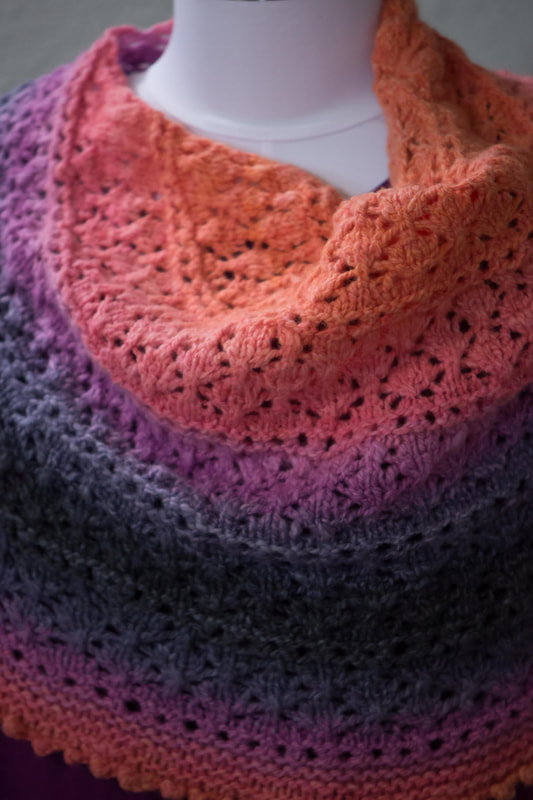
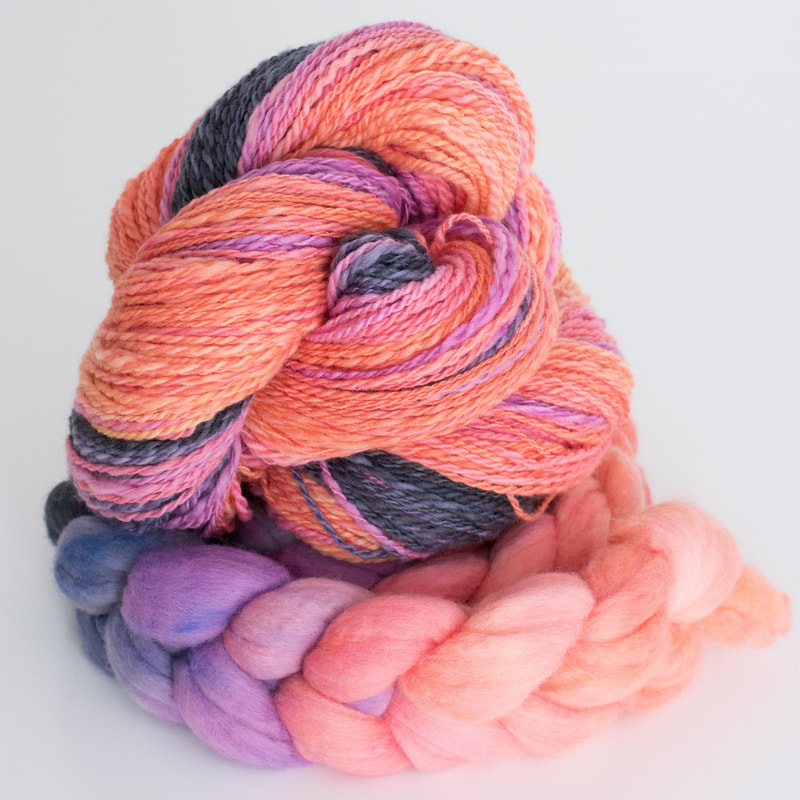
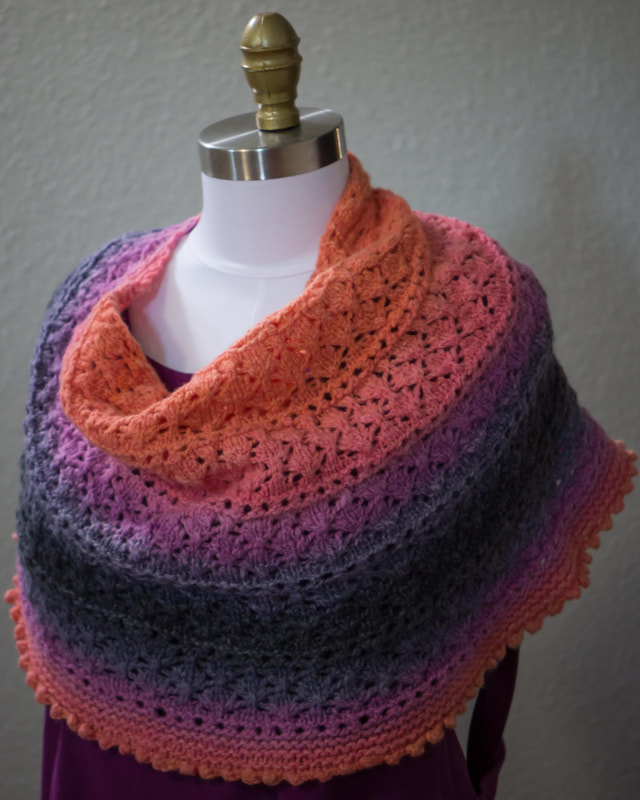
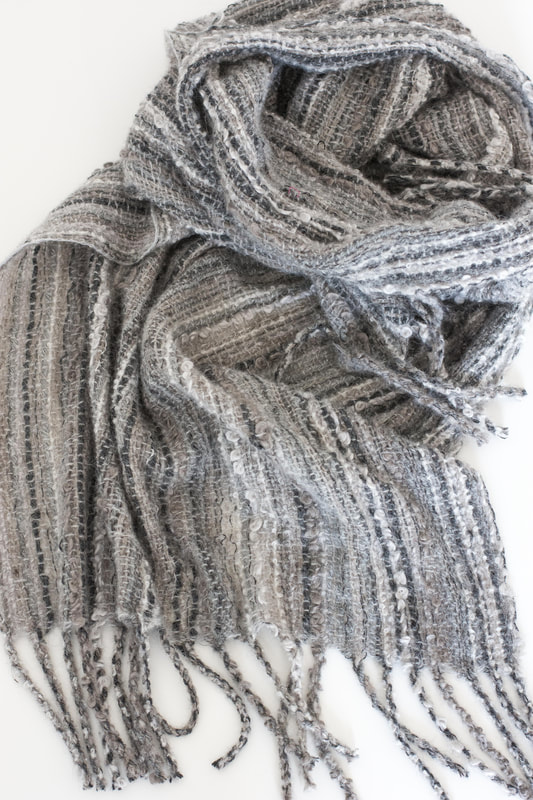
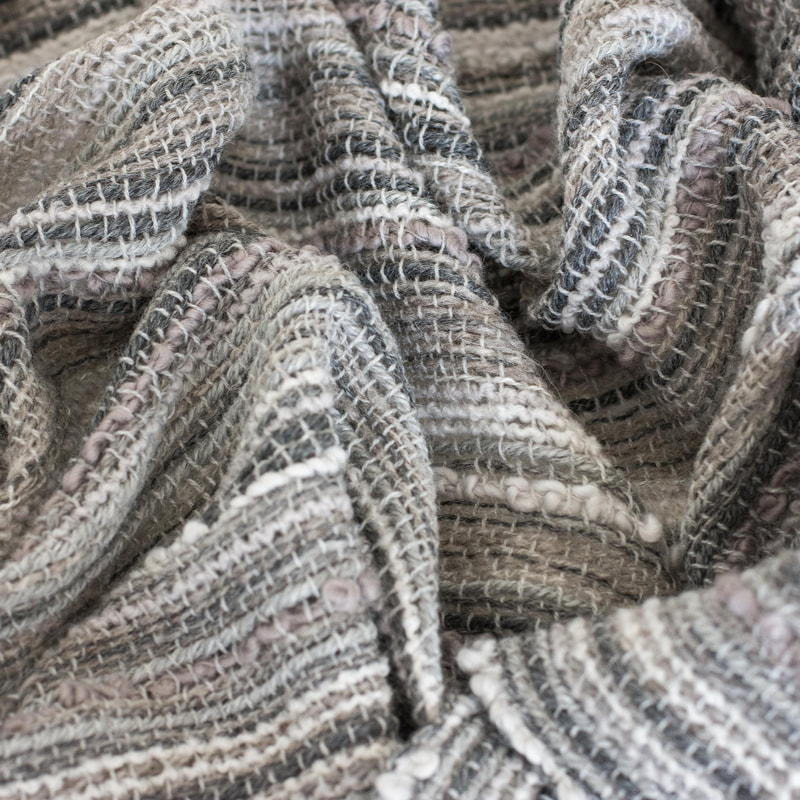
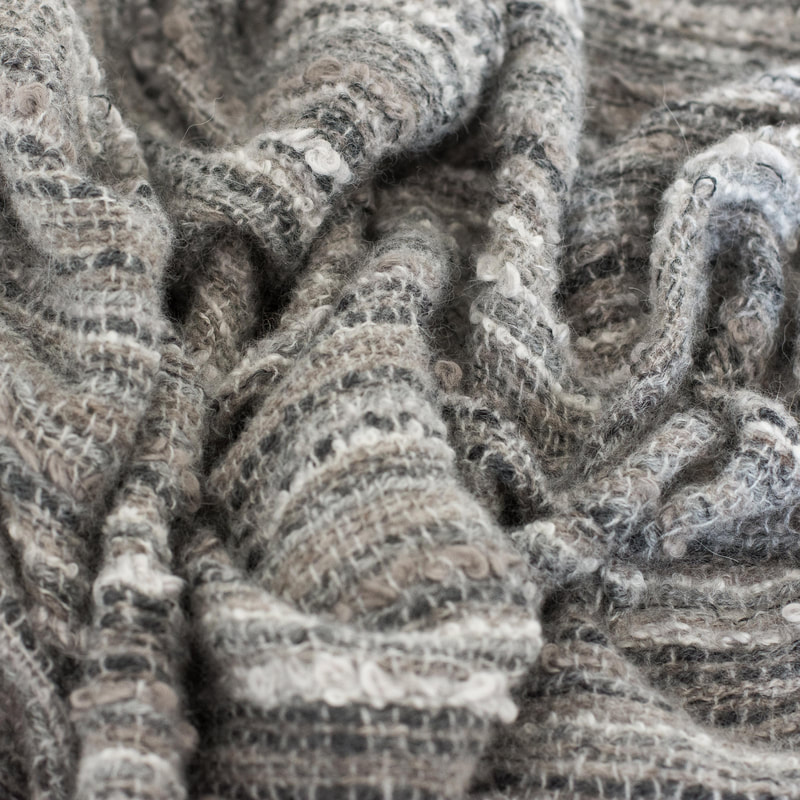
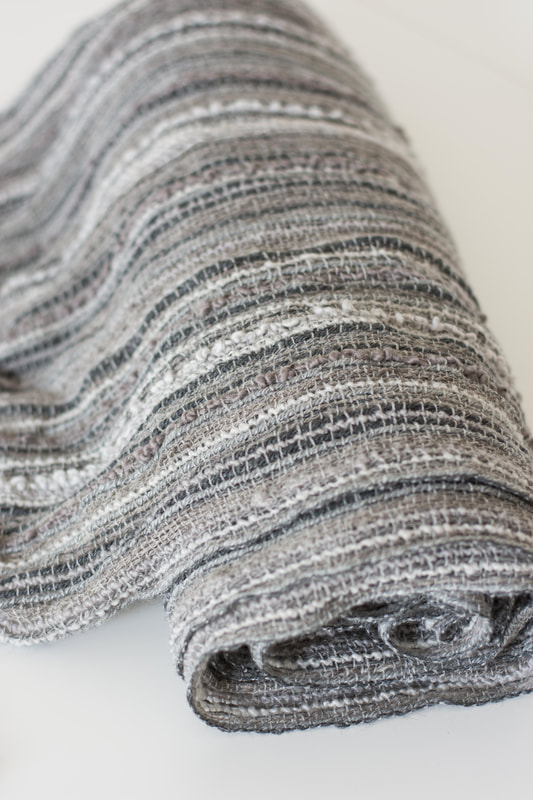
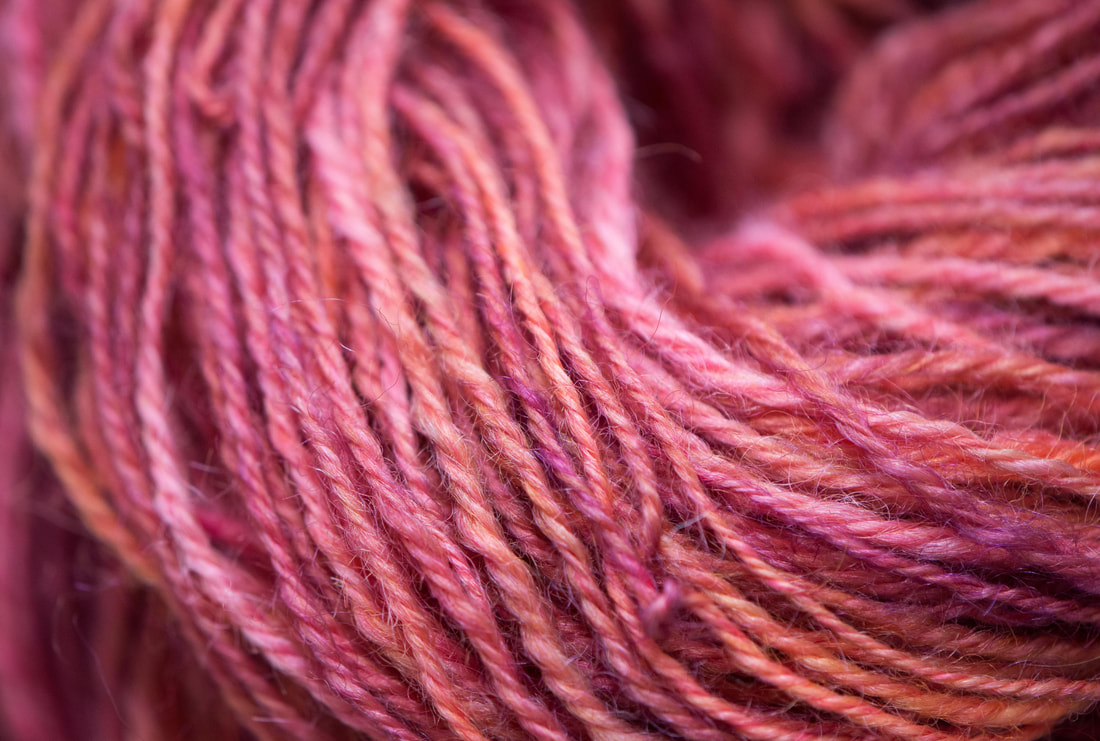
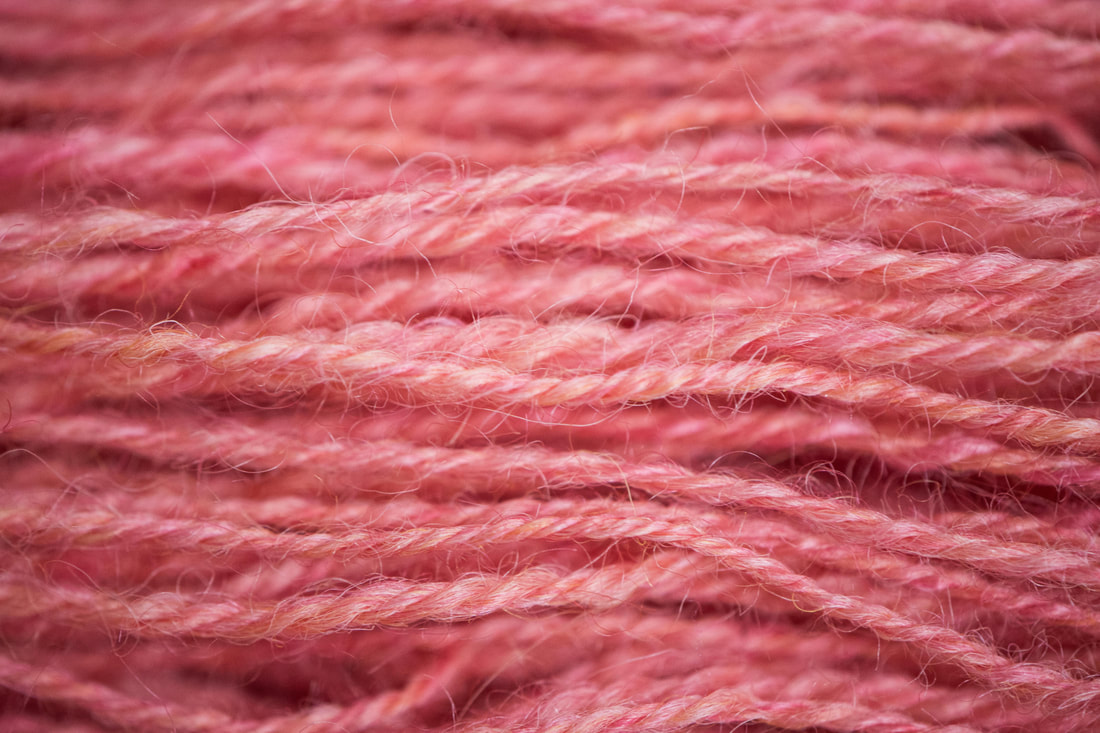
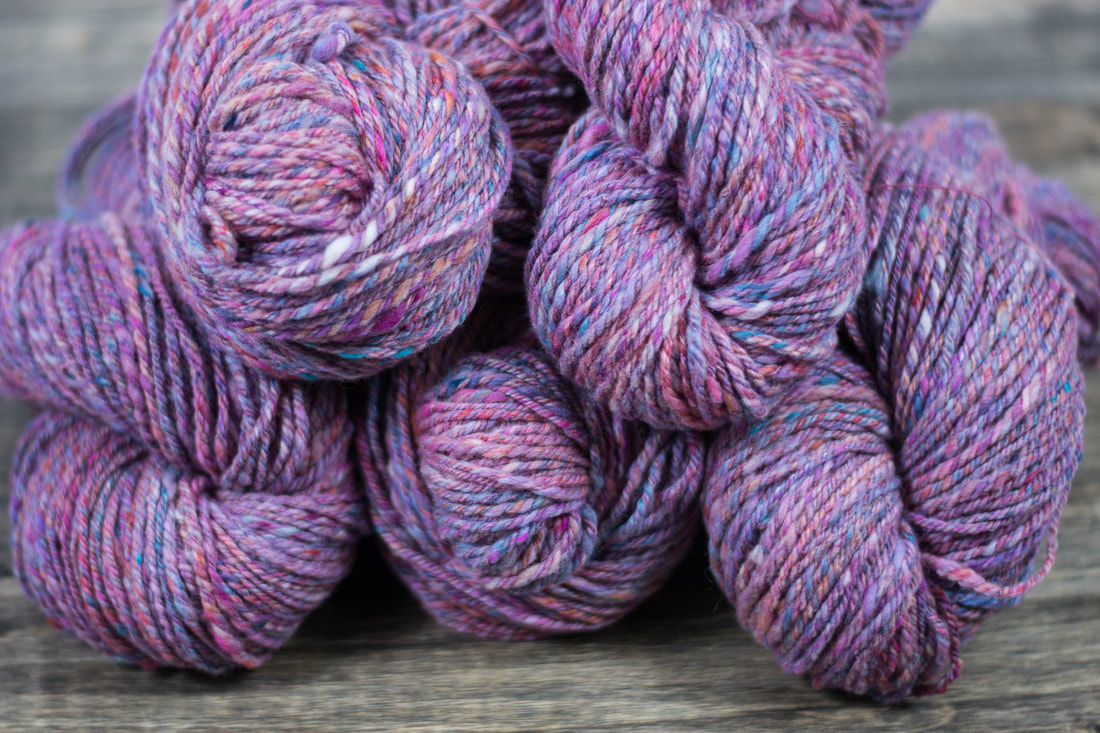
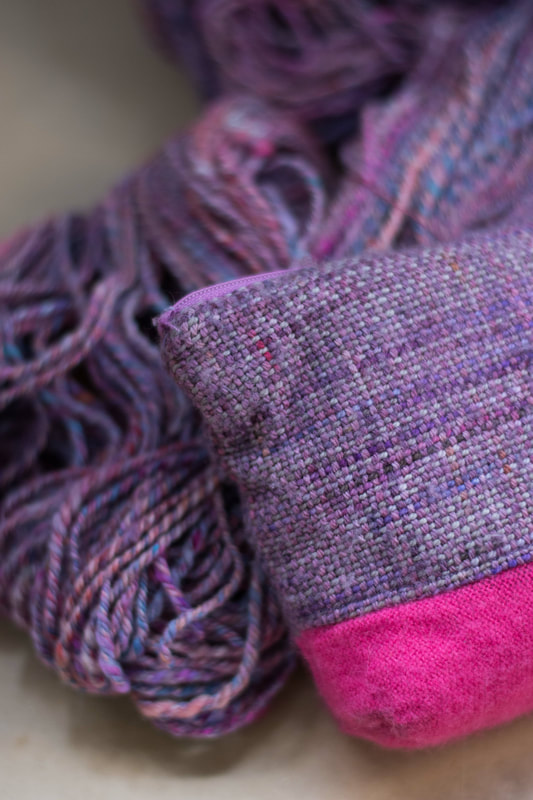
 RSS Feed
RSS Feed